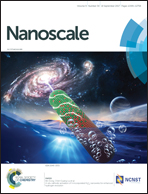Nanostructured materials on 3D nickel foam as electrocatalysts for water splitting
Abstract
Highly efficient and low-cost electrocatalysts are essential for water spitting via electrolysis in an economically viable fashion. However, the best catalytic performance is found with noble metal-based electrocatalysts, which presents a formidable obstacle for the commercial success of electrolytic water splitting-based H2 production due to their relatively high cost and scarcity. Therefore, the development of alternative inexpensive earth-abundant electrode materials with excellent electrocatalytic properties is of great urgency. In general, efficient electrocatalysts must possess several key characteristics such as low overpotential, good electrocatalytic activity, high stability, and low production costs. Direct synthesis of nanostructured catalysts on a conducting substrate may potentially improve the performance of the resultant electrocatalysts because of their high catalytic surface areas and the synergistic effect between the electrocatalyst and the conductive substrate. In this regard, three dimensional (3D) nickel foams have been advantageously utilized as electrode substrates as they offer a large active surface area and a highly conductive continuous porous 3D network. In this review, we discuss the most recent developments in nanostructured materials directly synthesized on 3D nickel foam as potential electrode candidates for electrochemical water electrolysis, namely, the oxygen evolution reaction (OER) and the hydrogen evolution reaction (HER). We also provide perspectives and outlooks for catalysts grown directly on 3D conducting substrates for future sustainable energy technologies.

- This article is part of the themed collection: Recent Review Articles


 Please wait while we load your content...
Please wait while we load your content...